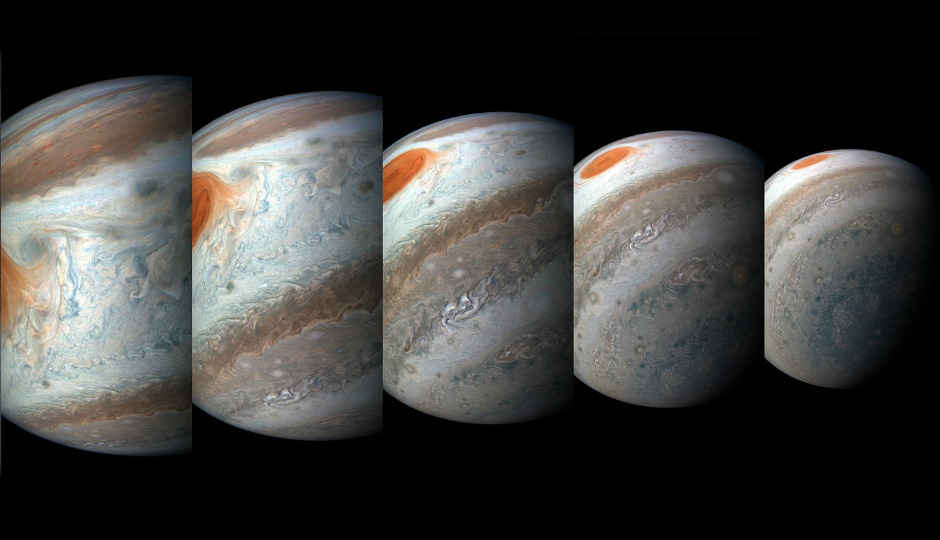NASA’s Juno spacecraft to soon reach halfway point in Jupiter data collection mission

Juno will flyby Jupiter for the 16th time at a speed of 207,287 kilometers per hour on December 21.
Juno, the NASA space probe studying Jupiter, will reach halfway through its data collection mission on December 21, 8:49:48 AM PST (10:19 PM IST). The day, and time, will mark the spacecraft’s 16th science pass of the gas giant as it will travel at a speed of 207,287 kilometers per hour. The orbiter was launched back on August 5, 2017, from Cape Canaveral, Florida and it’s on a 53-day highly-elliptical orbit around Jupiter. Each orbit comprises of the orbiter passing over the planet's cloud deck, where it flies a ground track that extends from Jupiter's north pole to its south pole.
"With our 16th science flyby, we will have complete global coverage of Jupiter, albeit at coarse resolution, with polar passes separated by 22.5 degrees of longitude," said Jack Connerney, Juno deputy principal investigator from the Space Research Corporation in Annapolis, Maryland. "Over the second half of our prime mission — science flybys 17 through 32 — we will split the difference, flying exactly halfway between each previous orbit. This will provide coverage of the planet every 11.25 degrees of longitude, providing a more detailed picture of what makes the whole of Jupiter tick."
NASA says Juno packs a slew of scientific instruments that probe the planet’s atmosphere to learn more about it, like its origins, interior structure, atmosphere and magnetosphere. The Stellar Reference Unit collects engineering data, which is used for navigation and attitude determination. There is also the JunoCam imager that “was conceived as an outreach instrument to bring the excitement and beauty of Jupiter exploration to the public.”
"While originally envisioned solely as an outreach instrument to help tell the Juno story, JunoCam has become much more than that," said Candy Hansen, Juno co-investigator at the Planetary Science Institute in Tucson, Arizona. "Our time-lapse sequences of images over the poles allow us to study the dynamics of Jupiter's unique circumpolar cyclones and to image high-altitude hazes. We are also using JunoCam to study the structure of the Great Red Spot and its interaction with its surroundings."
The cover image of this article has been constructed with the help of the JunoCam imager, by citizen scientists Gerald Eichstädt and Seán Doran.
Digit NewsDesk
Digit News Desk writes news stories across a range of topics. Getting you news updates on the latest in the world of tech. View Full Profile





